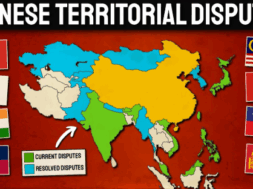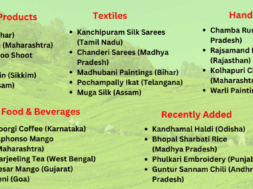
In conversation with Mr. Paras Chaudhary, AI Researcher and Tech Entrepreneur
1. What inspired you to pursue a career in AI and Machine Learning?
Ans. My inspiration to pursue a career in AI and Machine Learning stems from a deep fascination with modern AI/ML algorithms and models that can quantify the quirks and biases of humans. I am captivated by how these technologies help us understand humanity better, uncovering hidden trends and patterns that have always been around us but were invisible to the naked eye.
This interest in understanding human behavior was sparked during my childhood when I read the works of Daniel Kahneman. His insights into behavioral economics fascinated me and provided a profound understanding of the complexities of human decision-making. Separately, I was inspired by the power of technology and its potential to address real-world problems.
Unlike many of my peers at Columbia University who were drawn to computer science for its objectivity and the binary nature of problems in the field, I was intrigued by the subjective and non-absolute aspects of real life. I saw AI as a tool to bridge this gap, allowing us to explore and understand the complexities of human behavior and decision-making. This unique perspective has driven my passion for leveraging AI to make a meaningful impact on society.
Ultimately, I understood the power of AI and wanted to apply it to improve the lives of others. By addressing societal issues and creating solutions that benefit underprivileged and marginalized communities, I aim to harness the potential of AI to bring about positive change in the world.
2. How did your grandmother’s passing influence your mission and work at CareAsOne?
Ans. My grandmother’s passing profoundly impacted my mission and work at CareAsOne. She raised me while both of my parents were working, and I attribute much of my academic and professional success to the values she instilled in me. Her influence deepened my commitment to improving elder care.
In South Asian culture, keeping our elders close is a deeply rooted value that shapes family life. I noticed a similar shift in Western culture, especially after COVID-19, with increased emphasis on homecare. I believe homecare is crucial, as nursing homes often lack the personal and compassionate care our elders deserve.
With CareAsOne, my goal is to provide elders and their families with the best possible care by creating a platform to find reliable care agencies. I also aim to support these agencies by helping them hire more caregivers. The more caregivers they have, the more people they can serve effectively.
While I was always committed to improving elder care, my grandmother’s passing intensified this dedication. It motivated me to ensure that others receive the care and attention they deserve, just as my grandmother did for me and later as we did for her.
3. Can you share the key challenges you faced while expanding CareAsOne and how you overcame them?
Ans. Expanding CareAsOne involved several challenges, notably in motivating caregivers to be proactive and ensuring platform effectiveness. One major issue was encouraging caregivers, especially those less fluent in English, to complete their profiles and actively engage with job opportunities.
To tackle this, we integrated AI-driven solutions to simplify profile creation and provide personalized support. We used AI to generate profile suggestions and send behavior-based reminders to keep caregivers engaged with job opportunities and interviews.
We also focused on delivering value to caregiving agencies by offering targeted marketing solutions and improving job listings to attract qualified caregivers. Our AI-powered recommendations matched caregivers with suitable job opportunities, enhancing placement success.
Additionally, we faced constraints in research and development resources. We addressed this by using serverless computing and replacing some large language model costs with traditional and open-source machine learning methods, optimizing our AI capabilities while managing expenses.
Overall, these strategies improved caregiver engagement, increased hiring conversion rates, and provided greater value to our agency partners.
4. How do you see AI transforming the caregiving industry in the next few years?
Ans. From my experience as the CTO of an elder-tech startup, I believe AI is poised to revolutionize the caregiving industry significantly. AI will enhance the personalization of care by analyzing extensive patient data to create tailored care plans and predict health issues before they escalate. This capability will allow for more proactive and customized care, addressing individual needs more effectively.
AI-driven tools will also play a crucial role in monitoring and managing mental health conditions, alerting caregivers to potential problems and suggesting timely interventions. Additionally, AI can automate routine administrative tasks such as scheduling and medication reminders, allowing caregivers to focus more on direct patient care.
Remote monitoring and virtual care powered by AI will provide real-time health data, which is especially beneficial for elderly patients who prefer to remain at home. This technology will help reduce caregiving costs by optimizing care plans and automating various tasks, making caregiving more efficient and cost-effective.
Moreover, AI can offer continuous training and support for caregivers, further improving the quality of care provided. Overall, AI’s integration into caregiving will enhance efficiency, improve patient outcomes, and make caregiving more sustainable in response to growing demand.
5. What motivated you to transfer from Carnegie Mellon University to Columbia University?
Ans. While Carnegie Mellon University is renowned for its leadership in tech education, my decision to transfer to Columbia University was driven by a combination of personal aspirations and a desire for new experiences. Growing up, I had always been captivated by New York City, inspired by stories, books, and movies that painted it as a vibrant and iconic place. The idea of living and studying in such an epic city, while being part of an Ivy League institution with its rich history of producing influential figures, was a dream that resonated deeply with me.
The Ivy League’s prestigious reputation, associated with numerous presidents and notable personalities, had a strong appeal. I was drawn to the idea of being part of this legacy, which felt like an opportunity to be a part of something grand and historically significant.
On a more personal level, New York City felt like home in a way that an isolated suburban college town could not. The hustle and bustle of the city, reminiscent of Delhi NCR where I grew up, matched my energetic and ambitious nature. I realized that the dynamic and fast-paced environment of NYC was a better fit for me than a quieter, more isolated setting.
Looking back, the choice to move to NYC was more about following my heart than purely rational considerations. The city’s vibrant energy and its resemblance to my hometown made it the perfect place for me to thrive both personally and professionally. After all these years here, I feel a deep connection to NYC and couldn’t imagine being anywhere else in America.
6. How did your experience at Amazon shape your understanding and application of AI technologies?
Ans. Joining Amazon right after grad school was like finding myself at the heart of a technological powerhouse. At Amazon, I was immersed in working with massive volumes of global unstructured data—such as reviews, FAQs, and product descriptions. My role involved creating structured data from this sea of information to extract product attributes that could be searched, indexed, and used to enhance recommendations.
This experience taught me invaluable lessons in handling large-scale data operations. I learned how to ingest and process vast amounts of data, manage parallel processing, and address concurrency issues such as synchronization of writes and locking. Dealing with these challenges at Amazon’s scale was a deep dive into cutting-edge technologies and techniques.
Working at Amazon exposed me to the complexities of running operations on a global scale, from ensuring data consistency to optimizing performance across distributed systems. This hands-on experience in managing and leveraging big data was crucial in shaping my understanding of AI technologies and their practical applications.
Overall, my time at Amazon not only honed my technical skills but also provided a profound understanding of how to apply AI effectively in large-scale environments, preparing me for future ventures and challenges.
7. Can you elaborate on the AI initiative you led at Morgan & Morgan and its impact?
Ans. At Morgan & Morgan, I led several AI initiatives that significantly enhanced our legal operations. Leveraging my experience from Amazon, I developed an AI-driven system to detect critical injuries from medical records, streamlining identification and categorization to improve case accuracy and efficiency. Additionally, I created an AI tool to analyze police reports, identifying high-value trucking cases and optimizing resource allocation.
Our AI technology also automated the creation of legal documents, reducing manual information gathering and freeing lawyers to focus on more complex tasks. These innovations significantly increased case handling speed and accuracy, directly contributing to increased revenue and efficiency across our large-scale operations.
For example, the Medical Reviews initiative, which involved AI-driven injury, treatment, and recommendation extraction, identified critical injuries swiftly, reducing the average time to demand and improving client outcomes. Overall, these AI-driven solutions proved invaluable, making our legal processes more efficient and profitable.
One notable success was our trucking identification process. This AI-driven system flagged high-value trucking cases, which had a substantial financial impact. On average, trucking-related automobile crashes settle for $40,000 more than other types of crashes. Our service identified a specific case that settled for $7 million, showcasing the significant monetary benefits and effectiveness of this technology. These advancements are crucial for an injury law firm, as they ensure we maximize potential revenue for our clients and the firm, ultimately enhancing our ability to deliver justice and support to those in need.
8. What are the most rewarding aspects of your work in leveraging AI for societal impact?
Ans. The most rewarding aspect of leveraging AI for societal impact intertwines deeply with my personal journey and passion for creation. As a child, I found immense joy in painting and creating art. I loved the process of bringing something to life that could touch others, bring them joy, or evoke emotion. To me, art was about creating something meaningful that resonated with people on a profound level.
When I chose engineering over a traditional art career, it was driven by a desire to continue being a creator, but with a focus on technology that could have a broader and deeper impact. I saw engineering as a way to channel my creative instincts into building solutions that could transform lives and address significant societal challenges.
In this light, AI becomes a form of “more impactful art.” It’s about designing technologies that don’t just exist but truly make a difference. For example, developing AI systems that enhance legal assistance for underserved communities or improve elder care is akin to creating a masterpiece that has real, tangible effects on people’s lives. Witnessing how our AI tools streamline legal processes and ensure timely support or personalize care for seniors is deeply fulfilling. It’s like creating a piece of art that, instead of hanging on a wall, actively improves lives and brings meaningful change.
This work bridges the gap between artistry and impact, making technology a canvas for creating solutions that resonate on a human level. The joy comes not just from the technological innovations themselves, but from knowing that these innovations carry forward the spirit of creation into realms where they can touch lives, improve outcomes, and contribute to a better world. This synthesis of creativity and purpose makes the pursuit of AI for societal good profoundly rewarding, transforming the abstract concept of art into a powerful tool for social change.
9. As a peer reviewer for prestigious journals, what trends or advancements in AI and Machine Learning excite you the most?
Ans. As a peer reviewer, I find several advancements in AI and Machine Learning particularly exciting. One of the most promising is the integration of generative AI with neural radiance fields (NeRFs). This technology allows for the creation of highly realistic 3D scenes from 2D images, transforming fields like virtual reality, gaming, and urban planning by enhancing the accuracy and immersion of digital environments.
Progress in generative adversarial networks (GANs) also stands out. Recent improvements in GANs have enhanced stability and image quality, enabling the generation of near-photorealistic images. This has significant applications in industries such as fashion, where virtual try-ons and custom designs are becoming increasingly sophisticated.
Multimodal AI, which combines text, images, and audio, is another exciting development. This approach is leading to more advanced virtual assistants capable of understanding and responding to a broader range of inputs, making interactions more intuitive.
Quantum AI is pushing the boundaries of machine learning by leveraging quantum computing to solve complex problems more efficiently. This could lead to breakthroughs in areas like cryptography, optimization, and drug discovery.
Additionally, advancements in model interpretability are crucial. Improving the transparency of AI decision-making processes is essential for fostering trust and adoption in high-risk fields such as medical diagnostics and legal analysis.
10. What advice would you give to young professionals aspiring to make a significant impact in the tech industry?
Ans. As you embark on your journey in the tech industry, embrace a vision that intertwines excellence, courage, and creation. Pursue excellence in every endeavor, driving yourself to do things right from the outset. This dedication will lead you to success and provide invaluable lessons, even if you’re new to the field. Understand that technology is a powerful tool, but its true significance lies in what you build with it. Focus not just on the technology itself but on the impact it can create. Be fearless in seizing opportunities and taking risks. Embrace the unknown with confidence, for each challenge is a chance to learn and grow. In a world full of consumers, strive to be a creator. Use existing innovations as your foundation, but always add your unique touch. Your legacy will be defined by what you contribute, not merely by what you use. Be intentional with your time and efforts. Reflect on your goals, document your progress, and let your journey be guided by purpose. Take control of your narrative, and let every decision reflect your vision and values. Step forward not just as a participant, but as a leader and innovator. Build with passion and purpose, shaping a future that is truly remarkable.

















